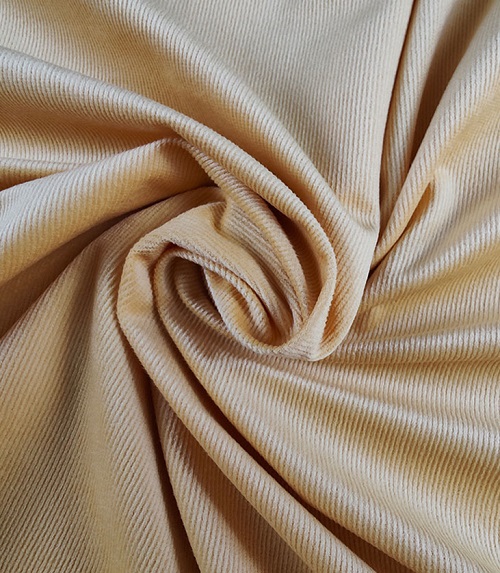Garment fabric is the very soul of clothing. From the soft drape of silk to the rugged texture of denim, the choice of fabric defines not only how a garment looks but also how it feels, performs, and lasts. Fabric selection influences everything — comfort, durability, sustainability, and even cultural expression. Understanding garment fabrics means understanding the foundation upon which all apparel is built.
What Is Garment Fabric?
Garment fabric refers to any textile material used in the production of clothing and apparel. It can be woven, knitted, or non-woven, made from natural, synthetic, or blended fibers. The properties of each fabric depend on its fiber composition, construction method, and finishing processes.
Classification of Fabrics
Based on Fiber Origin
Natural Fabrics
Derived from plants or animals, natural fabrics are known for their breathability, comfort, and biodegradability.
- Cotton: Soft, absorbent, and versatile; ideal for casual and summer wear.
- Linen: Lightweight and cool, known for its natural texture and moisture-wicking ability.
- Silk: Luxurious and smooth, prized for its sheen and drape.
- Wool: Warm, elastic, and insulating — perfect for cold climates.
Synthetic Fabrics
Created through chemical synthesis, synthetics offer high strength, flexibility, and resistance to shrinking.
- Polyester: Durable, wrinkle-resistant, and quick-drying; commonly used in sportswear.
- Nylon: Smooth, strong, and elastic; used in hosiery and outerwear.
- Acrylic: Lightweight and warm, often a substitute for wool.
- Spandex (Lycra): Highly stretchable; enhances comfort and fit in activewear.
Blended Fabrics
Combining fibers improves performance and texture. For example, cotton-polyester blends reduce wrinkles and improve durability, while wool-silk blends balance warmth and softness.
Fabric Construction Techniques
Woven Fabrics
Created by interlacing warp and weft yarns at right angles.
- Plain Weave: Simplest and most durable (e.g., poplin, muslin).
- Twill Weave: Diagonal texture, adds flexibility and strength (e.g., denim, gabardine).
- Satin Weave: Smooth and lustrous surface, often used for formal wear.
Knitted Fabrics
Formed by interlooping yarns; stretchier and more flexible than wovens.
- Weft Knit: Common in T-shirts and sweaters (e.g., jersey, rib knit).
- Warp Knit: Strong and stable; used for lingerie and sportswear (e.g., tricot, lace).
Non-Woven Fabrics
Made by bonding or felting fibers together. Used in medical apparel, interlinings, and disposable garments.
Fabric Finishing and Treatments
Fabric finishing enhances appearance, texture, or functionality. Common techniques include:
- *Mercerization: Improves luster and dye affinity in cotton.
- *Sanforization: Pre-shrinks fabric to maintain garment shape.
- *Waterproofing and Coating: Adds resistance to moisture and stains.
- *Brushing and Sueding: Increases softness and comfort.
- *Antimicrobial Finishing: Used in sportswear and medical uniforms.
Functional and Technical Fabrics
Modern textile innovation has given rise to performance fabrics designed for specific uses:
- Moisture-Wicking Fabrics: Draw sweat away from the body (e.g., Coolmax).
- Thermal Fabrics: Retain heat or cool the body (e.g., Thinsulate, Outlast).
- Stretch and Compression Fabrics: Improve movement and muscle support.
- UV-Resistant Fabrics: Protect the skin from harmful rays.
- Smart Textiles: Integrate sensors or conductive threads for wearable technology.
Aesthetic and Cultural Dimensions
Fabrics carry immense cultural symbolism. From Indian silk sarees to Scottish tartan kilts, textiles represent heritage and identity. Designers use texture, pattern, and drape to express emotion and narrative. Fashion trends often evolve through the creative reinterpretation of traditional fabrics.
Sustainability and Environmental Impact
The global fashion industry faces growing scrutiny over textile waste and pollution.
Sustainable fabric development focuses on:
- Organic Fibers: Grown without pesticides (e.g., organic cotton, hemp, bamboo).
- Recycled Fabrics: Made from waste materials (e.g., rPET polyester from plastic bottles).
- Biodegradable Fibers: Such as Tencel (lyocell) derived from wood pulp.
- Eco-Friendly Dyeing and Finishing: Using natural dyes and waterless technologies.
Sustainability now defines the future of fabric manufacturing, pushing the industry toward circular fashion and zero-waste production.
Fabric Selection in Garment Design
Designers choose fabrics based on multiple criteria:
- Purpose: Casual, formal, or performance wear.
- Season: Lightweight fabrics for summer; insulating ones for winter.
- Drape and Structure: Soft fabrics for flowing silhouettes; stiff fabrics for tailored looks.
- Maintenance: Ease of washing, ironing, and longevity.
- Cost: Balancing aesthetics and affordability.
An experienced designer often starts with fabric swatches to let the material inspire the design — not the other way around.
Future Trends in Fabric Innovation
Textile technology continues to evolve rapidly.
Emerging trends include:
- Bioengineered Fabrics: Lab-grown leather, spider silk, and cellulose-based fibers.
- 3D-Knitted Fabrics: Seamless, customizable garments produced by digital knitting machines.
- Self-Healing Textiles: Materials that repair small damages automatically.
- Phase-Change Materials: Adjust temperature dynamically based on body heat.
- Circular Fabrics: Designed to be recycled and re-manufactured indefinitely.
Garment fabric is more than just a medium of fashion — it’s a fusion of science, art, and culture. Every thread tells a story of craftsmanship, innovation, and purpose. As consumers grow more conscious of comfort, performance, and sustainability, the importance of understanding fabrics becomes ever greater. Whether for designers, manufacturers, or everyday wearers, fabric knowledge forms the essential language of modern fashion.

